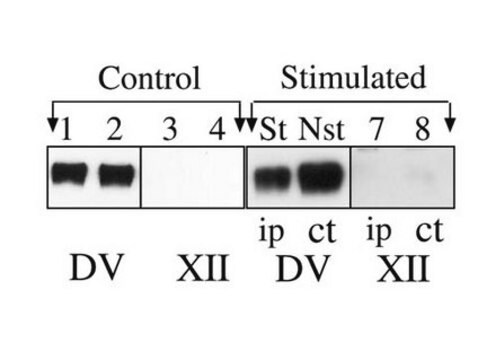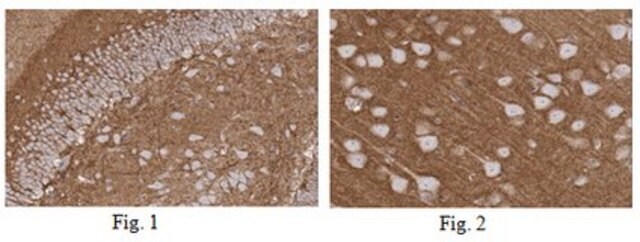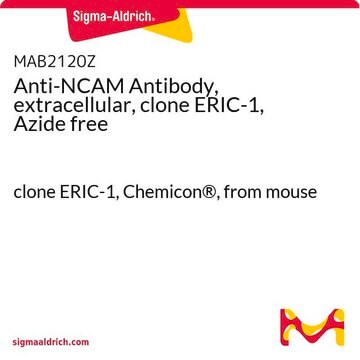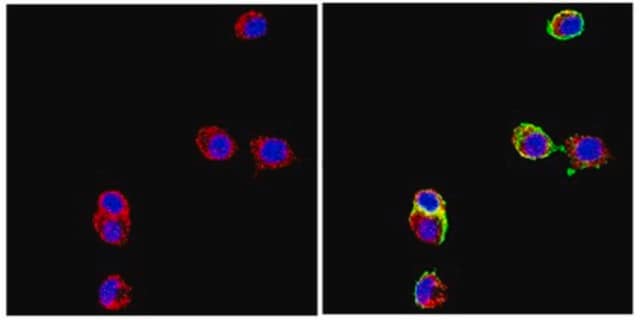AB5032
Anti-Neural Cell Adhesion Molecule Antibody
Chemicon®, from rabbit
Synonym(s):
CD56 antigen, antigen recognized by monoclonal antibody 5.1H11
About This Item
Recommended Products
biological source
rabbit
Quality Level
antibody form
affinity purified immunoglobulin
antibody product type
primary antibodies
clone
polyclonal
purified by
affinity chromatography
species reactivity
mouse, rat, chicken, human
manufacturer/tradename
Chemicon®
technique(s)
ELISA: suitable
immunofluorescence: suitable
immunohistochemistry: suitable
western blot: suitable
NCBI accession no.
UniProt accession no.
shipped in
dry ice
target post-translational modification
unmodified
Gene Information
human ... NCAM1(4684)
General description
Specificity
Immunogen
Application
A previous lot was shown to work with a wide range of fixatives. Will detect chicken NCAM using a concentration of 1 μg/mL and mouse NCAM using a concentration of 2 μg/mL.
Immunofluorescence:
A previous lot of this antibody was used in Immunofluorescence.
Function blocking:
A previous lot of this antibody was used in Function blocking.
ELISA:
0.3 μg/mL of a previous lot was used.
Optimal working dilutions must be determined by end user.
Neuroscience
Growth Cones & Axon Guidance
Quality
Western Blot Analysis: 1:1000 dilution of this lot detected NCAM on 10 μg of mouse brain lysate.
Target description
Physical form
Storage and Stability
Handling Recommendations:
Upon first thaw, and prior to removing the cap, centrifuge the vial and gently mix the solution. Aliquot into microcentrifuge tubes and store at -20°C. Avoid repeated freeze/thaw cycles, which may damage IgG and affect product performance.
Analysis Note
Neuraminidase-treated mouse brain membrane.
Other Notes
Legal Information
Disclaimer
Not finding the right product?
Try our Product Selector Tool.
Storage Class Code
12 - Non Combustible Liquids
WGK
WGK 2
Flash Point(F)
Not applicable
Flash Point(C)
Not applicable
Certificates of Analysis (COA)
Search for Certificates of Analysis (COA) by entering the products Lot/Batch Number. Lot and Batch Numbers can be found on a product’s label following the words ‘Lot’ or ‘Batch’.
Already Own This Product?
Find documentation for the products that you have recently purchased in the Document Library.
Our team of scientists has experience in all areas of research including Life Science, Material Science, Chemical Synthesis, Chromatography, Analytical and many others.
Contact Technical Service








